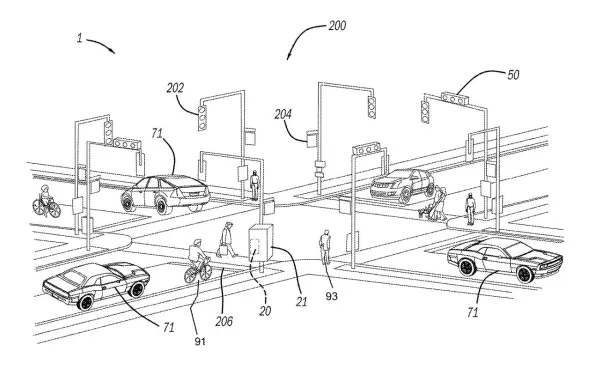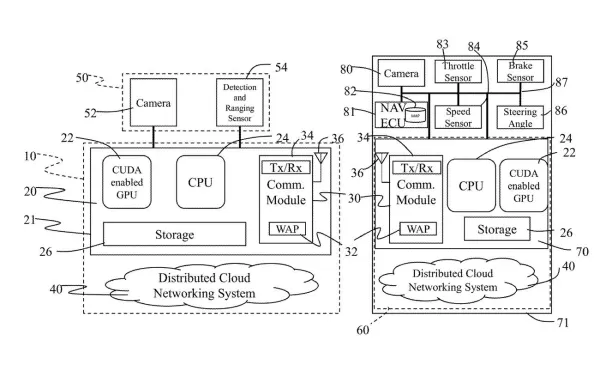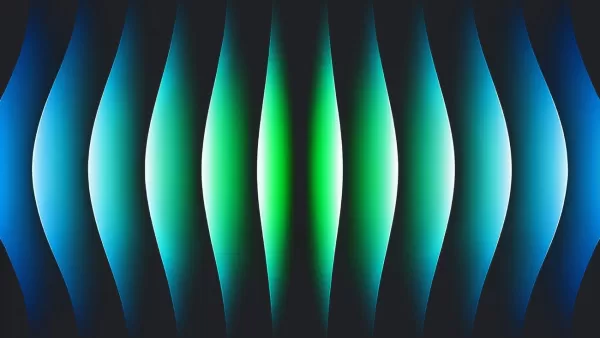Detecting ‘Aggressive Driving’ With Machine Learning and Edge Computing
A new patent application has been filed that introduces an innovative approach to curb aggressive driving at intersections. This system, utilizing machine learning algorithms integrated into civic edge computing devices, marks a shift from the typical focus on in-car systems designed for insurance analytics towards a more municipal-oriented solution. This proposal aims not only to penalize drivers who deviate from safe driving norms but also to provide them with immediate in-car audiovisual warnings to correct their behavior.
The patent, filed on April 29, 2021, at the US Patent and Trademark Office, is a collaborative effort between the Board of Regents of the University of Michigan and Denso Corporation, a subsidiary of Toyota. Unlike proprietary systems focused on insurance monitoring, this system leverages well-resourced edge computing nodes at traffic junctions. These nodes collect data from both roadside resources and sensors within nearby vehicles to offer real-time, actionable feedback to drivers.
 *The UMich patent is not a proprietary, in-car system aimed at insurance oversight, nor designed solely to produce forensic data, but rather relies on well-resourced edge computing nodes deployed at traffic intersections to provide immediate and actionable feedback, by collating data from roadside edge computing resources and from sensors installed in nearby vehicles.* Source: https://pdfaiw.uspto.gov/76/2021/50/012/1.pdf
*The UMich patent is not a proprietary, in-car system aimed at insurance oversight, nor designed solely to produce forensic data, but rather relies on well-resourced edge computing nodes deployed at traffic intersections to provide immediate and actionable feedback, by collating data from roadside edge computing resources and from sensors installed in nearby vehicles.* Source: https://pdfaiw.uspto.gov/76/2021/50/012/1.pdf
The proposed system isn't just reliant on civic infrastructure; it also necessitates in-vehicle technology, transforming cars into active sensors within the network. This means that every car equipped with the system becomes a node for traffic monitoring, while also being subject to the same scrutiny. The in-car setup requires direct access to data from the vehicle's brakes, throttle, steering wheel, odometer, and maps. Both the roadside and in-vehicle components feature CUDA-enabled GPUs and local storage, alongside cloud connectivity.

Warnings for Aggressive Drivers
When the system detects aggressive driving, it can issue immediate warnings through the vehicle's audiovisual devices. For instance, a message like the one shown in FIG. 8A might be displayed, urging the driver to slow down. Additionally, the system can alert drivers about their speed or oncoming vehicles.
 *Warnings depicted in the patent application.* Source: https://pdfaiw.uspto.gov/fdd/76/2021/50/012/0.pdf
*Warnings depicted in the patent application.* Source: https://pdfaiw.uspto.gov/fdd/76/2021/50/012/0.pdf
In some scenarios, the system might use any available audio-visual devices, including the driver's smartphone, to issue warnings.
Driver-Specific Red Lights
Traffic light management is a known method for reducing accidents, but this system takes it a step further by potentially adjusting light timings based on individual driver behavior. The patent suggests that if the system predicts aggressive driving at one intersection, it could preemptively change the lights at subsequent intersections to red, encouraging the driver to slow down.
Inroads into Driver Privacy
While past proposals for in-car monitoring systems have focused on biometric indicators and emotion recognition to influence driver behavior, often linked to insurance premiums or accident investigations, the Michigan/Denso proposal leans towards state collaboration through changes in vehicle standards. Implementing such a system across state lines poses challenges, suggesting a need for federal or at least coordinated state action.
 *An illustration of the machine learning architecture proposed for the system, using Recurrent Neural Networks (RNN). The framework uses unsupervised learning and provides real-time feedback, but also makes provision for offline training to improve algorithms based on incoming data and events. The identification of aggressive driving behavior is facilitated by Dynamic Time Warping (DTW), an algorithm used in time series analysis to compare two temporal series or sequences of objects that may vary in speed.*
*An illustration of the machine learning architecture proposed for the system, using Recurrent Neural Networks (RNN). The framework uses unsupervised learning and provides real-time feedback, but also makes provision for offline training to improve algorithms based on incoming data and events. The identification of aggressive driving behavior is facilitated by Dynamic Time Warping (DTW), an algorithm used in time series analysis to compare two temporal series or sequences of objects that may vary in speed.*
Revenue Stream
This system could be the first to offer real-time analysis of aggressive driving within a civic framework capable of automatically issuing fines or alerting authorities. However, there's a concern that it could be misused by municipalities eager for revenue. Neda Masoud, an assistant professor at the University of Michigan, highlighted the importance of safety over false alarms but emphasized the need for mechanisms to allow drivers to challenge wrongful accusations.
The system is designed to handle aggressive driving events even from vehicles without onboard units by observing equipped nearby vehicles and intersection installations. This might involve other methods like license plate recognition, though the patent does not explicitly mention this.
Intersections: A High Risk
The focus on intersections in the Michigan patent is strategic, given that these areas are hotspots for traffic incidents. This aligns with previous research, such as Chinese studies using support vector machines to detect dangerous lane changes or smartphone sensors to identify erratic driving. The US National Highway Traffic Safety Administration's 2010 estimate that 40% of 2008 US accidents occurred at intersections underscores the relevance of such initiatives.
Related article
 Microsoft Study Finds More AI Tokens Increase Reasoning Errors
Emerging Insights Into LLM Reasoning EfficiencyNew research from Microsoft demonstrates that advanced reasoning techniques in large language models don't produce uniform improvements across different AI systems. Their groundbreaking study analyzed ho
Microsoft Study Finds More AI Tokens Increase Reasoning Errors
Emerging Insights Into LLM Reasoning EfficiencyNew research from Microsoft demonstrates that advanced reasoning techniques in large language models don't produce uniform improvements across different AI systems. Their groundbreaking study analyzed ho
 Google Cloud Powers Breakthroughs in Scientific Research and Discovery
The digital revolution is transforming scientific methodologies through unprecedented computational capabilities. Cutting-edge technologies now augment both theoretical frameworks and laboratory experiments, propelling breakthroughs across discipline
Google Cloud Powers Breakthroughs in Scientific Research and Discovery
The digital revolution is transforming scientific methodologies through unprecedented computational capabilities. Cutting-edge technologies now augment both theoretical frameworks and laboratory experiments, propelling breakthroughs across discipline
 AI Accelerates Scientific Research for Greater Real-World Impact
Google has consistently harnessed AI as a catalyst for scientific progress, with today's pace of discovery reaching extraordinary new levels. This acceleration has transformed the research cycle, turning fundamental breakthroughs into practical appli
Comments (15)
0/200
AI Accelerates Scientific Research for Greater Real-World Impact
Google has consistently harnessed AI as a catalyst for scientific progress, with today's pace of discovery reaching extraordinary new levels. This acceleration has transformed the research cycle, turning fundamental breakthroughs into practical appli
Comments (15)
0/200
![MatthewGonzalez]() MatthewGonzalez
MatthewGonzalez
 April 25, 2025 at 2:31:08 PM EDT
April 25, 2025 at 2:31:08 PM EDT
Este novo sistema para detectar direção agressiva usando computação de borda é bem legal! Já era hora de focarmos em soluções cívicas em vez de apenas tecnologia dentro do carro. A única desvantagem é que pode não funcionar bem em mau tempo. Ainda assim, um passo na direção certa! 👍


 0
0
![KennethWalker]() KennethWalker
KennethWalker
 April 25, 2025 at 9:07:51 AM EDT
April 25, 2025 at 9:07:51 AM EDT
This new system for detecting aggressive driving using edge computing is pretty cool! It's about time we focus on civic solutions rather than just in-car tech. The only downside is it might not work well in bad weather. Still, a step in the right direction! 👍


 0
0
![PaulBrown]() PaulBrown
PaulBrown
 April 21, 2025 at 9:57:31 AM EDT
April 21, 2025 at 9:57:31 AM EDT
エッジコンピューティングを使った攻撃的な運転の検出システムはかなりクールですね!車内の技術だけでなく、公共の解決策に焦点を当てる時が来たと思います。ただ、悪天候ではうまく機能しないかもしれません。それでも、正しい方向への一歩です!👍


 0
0
![StevenGreen]() StevenGreen
StevenGreen
 April 20, 2025 at 1:42:05 PM EDT
April 20, 2025 at 1:42:05 PM EDT
¡Este nuevo sistema para detectar conducción agresiva usando computación de borde es bastante genial! Ya era hora de que nos enfocáramos en soluciones cívicas en lugar de solo en tecnología dentro del coche. La única desventaja es que puede no funcionar bien en mal tiempo. Aún así, un paso en la dirección correcta! 👍


 0
0
![FrankClark]() FrankClark
FrankClark
 April 19, 2025 at 6:26:11 PM EDT
April 19, 2025 at 6:26:11 PM EDT
This aggressive driving detection system sounds cool, but using edge computing? That's next level! Hope it actually works to make roads safer. 🚗💨


 0
0
![HarryLewis]() HarryLewis
HarryLewis
 April 19, 2025 at 4:21:02 PM EDT
April 19, 2025 at 4:21:02 PM EDT
攻撃的な運転を検出するシステム、面白そうだけど、エッジコンピューティングを使うなんて次元が違う!本当に道路を安全にするなら素晴らしいね。🚦


 0
0
A new patent application has been filed that introduces an innovative approach to curb aggressive driving at intersections. This system, utilizing machine learning algorithms integrated into civic edge computing devices, marks a shift from the typical focus on in-car systems designed for insurance analytics towards a more municipal-oriented solution. This proposal aims not only to penalize drivers who deviate from safe driving norms but also to provide them with immediate in-car audiovisual warnings to correct their behavior.
The patent, filed on April 29, 2021, at the US Patent and Trademark Office, is a collaborative effort between the Board of Regents of the University of Michigan and Denso Corporation, a subsidiary of Toyota. Unlike proprietary systems focused on insurance monitoring, this system leverages well-resourced edge computing nodes at traffic junctions. These nodes collect data from both roadside resources and sensors within nearby vehicles to offer real-time, actionable feedback to drivers.
 *The UMich patent is not a proprietary, in-car system aimed at insurance oversight, nor designed solely to produce forensic data, but rather relies on well-resourced edge computing nodes deployed at traffic intersections to provide immediate and actionable feedback, by collating data from roadside edge computing resources and from sensors installed in nearby vehicles.* Source: https://pdfaiw.uspto.gov/76/2021/50/012/1.pdf
*The UMich patent is not a proprietary, in-car system aimed at insurance oversight, nor designed solely to produce forensic data, but rather relies on well-resourced edge computing nodes deployed at traffic intersections to provide immediate and actionable feedback, by collating data from roadside edge computing resources and from sensors installed in nearby vehicles.* Source: https://pdfaiw.uspto.gov/76/2021/50/012/1.pdf
The proposed system isn't just reliant on civic infrastructure; it also necessitates in-vehicle technology, transforming cars into active sensors within the network. This means that every car equipped with the system becomes a node for traffic monitoring, while also being subject to the same scrutiny. The in-car setup requires direct access to data from the vehicle's brakes, throttle, steering wheel, odometer, and maps. Both the roadside and in-vehicle components feature CUDA-enabled GPUs and local storage, alongside cloud connectivity.

Warnings for Aggressive Drivers
When the system detects aggressive driving, it can issue immediate warnings through the vehicle's audiovisual devices. For instance, a message like the one shown in FIG. 8A might be displayed, urging the driver to slow down. Additionally, the system can alert drivers about their speed or oncoming vehicles.
 *Warnings depicted in the patent application.* Source: https://pdfaiw.uspto.gov/fdd/76/2021/50/012/0.pdf
*Warnings depicted in the patent application.* Source: https://pdfaiw.uspto.gov/fdd/76/2021/50/012/0.pdf
In some scenarios, the system might use any available audio-visual devices, including the driver's smartphone, to issue warnings.
Driver-Specific Red Lights
Traffic light management is a known method for reducing accidents, but this system takes it a step further by potentially adjusting light timings based on individual driver behavior. The patent suggests that if the system predicts aggressive driving at one intersection, it could preemptively change the lights at subsequent intersections to red, encouraging the driver to slow down.
Inroads into Driver Privacy
While past proposals for in-car monitoring systems have focused on biometric indicators and emotion recognition to influence driver behavior, often linked to insurance premiums or accident investigations, the Michigan/Denso proposal leans towards state collaboration through changes in vehicle standards. Implementing such a system across state lines poses challenges, suggesting a need for federal or at least coordinated state action.
 *An illustration of the machine learning architecture proposed for the system, using Recurrent Neural Networks (RNN). The framework uses unsupervised learning and provides real-time feedback, but also makes provision for offline training to improve algorithms based on incoming data and events. The identification of aggressive driving behavior is facilitated by Dynamic Time Warping (DTW), an algorithm used in time series analysis to compare two temporal series or sequences of objects that may vary in speed.*
*An illustration of the machine learning architecture proposed for the system, using Recurrent Neural Networks (RNN). The framework uses unsupervised learning and provides real-time feedback, but also makes provision for offline training to improve algorithms based on incoming data and events. The identification of aggressive driving behavior is facilitated by Dynamic Time Warping (DTW), an algorithm used in time series analysis to compare two temporal series or sequences of objects that may vary in speed.*
Revenue Stream
This system could be the first to offer real-time analysis of aggressive driving within a civic framework capable of automatically issuing fines or alerting authorities. However, there's a concern that it could be misused by municipalities eager for revenue. Neda Masoud, an assistant professor at the University of Michigan, highlighted the importance of safety over false alarms but emphasized the need for mechanisms to allow drivers to challenge wrongful accusations.
The system is designed to handle aggressive driving events even from vehicles without onboard units by observing equipped nearby vehicles and intersection installations. This might involve other methods like license plate recognition, though the patent does not explicitly mention this.
Intersections: A High Risk
The focus on intersections in the Michigan patent is strategic, given that these areas are hotspots for traffic incidents. This aligns with previous research, such as Chinese studies using support vector machines to detect dangerous lane changes or smartphone sensors to identify erratic driving. The US National Highway Traffic Safety Administration's 2010 estimate that 40% of 2008 US accidents occurred at intersections underscores the relevance of such initiatives.
 Microsoft Study Finds More AI Tokens Increase Reasoning Errors
Emerging Insights Into LLM Reasoning EfficiencyNew research from Microsoft demonstrates that advanced reasoning techniques in large language models don't produce uniform improvements across different AI systems. Their groundbreaking study analyzed ho
Microsoft Study Finds More AI Tokens Increase Reasoning Errors
Emerging Insights Into LLM Reasoning EfficiencyNew research from Microsoft demonstrates that advanced reasoning techniques in large language models don't produce uniform improvements across different AI systems. Their groundbreaking study analyzed ho
 Google Cloud Powers Breakthroughs in Scientific Research and Discovery
The digital revolution is transforming scientific methodologies through unprecedented computational capabilities. Cutting-edge technologies now augment both theoretical frameworks and laboratory experiments, propelling breakthroughs across discipline
Google Cloud Powers Breakthroughs in Scientific Research and Discovery
The digital revolution is transforming scientific methodologies through unprecedented computational capabilities. Cutting-edge technologies now augment both theoretical frameworks and laboratory experiments, propelling breakthroughs across discipline
 AI Accelerates Scientific Research for Greater Real-World Impact
Google has consistently harnessed AI as a catalyst for scientific progress, with today's pace of discovery reaching extraordinary new levels. This acceleration has transformed the research cycle, turning fundamental breakthroughs into practical appli
AI Accelerates Scientific Research for Greater Real-World Impact
Google has consistently harnessed AI as a catalyst for scientific progress, with today's pace of discovery reaching extraordinary new levels. This acceleration has transformed the research cycle, turning fundamental breakthroughs into practical appli
 April 25, 2025 at 2:31:08 PM EDT
April 25, 2025 at 2:31:08 PM EDT
Este novo sistema para detectar direção agressiva usando computação de borda é bem legal! Já era hora de focarmos em soluções cívicas em vez de apenas tecnologia dentro do carro. A única desvantagem é que pode não funcionar bem em mau tempo. Ainda assim, um passo na direção certa! 👍


 0
0
 April 25, 2025 at 9:07:51 AM EDT
April 25, 2025 at 9:07:51 AM EDT
This new system for detecting aggressive driving using edge computing is pretty cool! It's about time we focus on civic solutions rather than just in-car tech. The only downside is it might not work well in bad weather. Still, a step in the right direction! 👍


 0
0
 April 21, 2025 at 9:57:31 AM EDT
April 21, 2025 at 9:57:31 AM EDT
エッジコンピューティングを使った攻撃的な運転の検出システムはかなりクールですね!車内の技術だけでなく、公共の解決策に焦点を当てる時が来たと思います。ただ、悪天候ではうまく機能しないかもしれません。それでも、正しい方向への一歩です!👍


 0
0
 April 20, 2025 at 1:42:05 PM EDT
April 20, 2025 at 1:42:05 PM EDT
¡Este nuevo sistema para detectar conducción agresiva usando computación de borde es bastante genial! Ya era hora de que nos enfocáramos en soluciones cívicas en lugar de solo en tecnología dentro del coche. La única desventaja es que puede no funcionar bien en mal tiempo. Aún así, un paso en la dirección correcta! 👍


 0
0
 April 19, 2025 at 6:26:11 PM EDT
April 19, 2025 at 6:26:11 PM EDT
This aggressive driving detection system sounds cool, but using edge computing? That's next level! Hope it actually works to make roads safer. 🚗💨


 0
0
 April 19, 2025 at 4:21:02 PM EDT
April 19, 2025 at 4:21:02 PM EDT
攻撃的な運転を検出するシステム、面白そうだけど、エッジコンピューティングを使うなんて次元が違う!本当に道路を安全にするなら素晴らしいね。🚦


 0
0





























